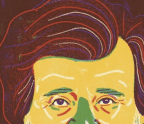TOO MUCH JOHNSON
A swift definition to begin:
Canon, noun. – a generally accepted rule, standard, or principle by which something is judged.
Originating in the Catholic Church, a canon is prescriptive and beyond question. Since the midpoint of the twentieth century, the canon of cinema – the films which define the medium and transcend the rest – has been steered by an unwavering helmsman: Orson Welles’ Citizen Kane (1941). The film is a bar against which all films made before or since are critically compared, and predestined to fall short of.
But canons are not an ever-fixed mark. They have histories consisting of alterations and re-evaluations. Contrary to conventional belief, film criticism is a subjective discipline characterised by changing taste. A film once hailed as a masterpiece by white straight cis men might, through any other lens, appear interminably dour, myopic in scope, or inherently problematic.
For purposes of brevity, this timeline is an attempt to trace the evolution of the Western cinematic canon, from the earliest studies of silent cinema to modern efforts in restoration and access.
The canon is largely determined by what’s on, thus the history of distribution is vital to understanding canonic expansion. Rather than waiting for a classic to be screened at the local picturehouse or broadcast on TV, today practically every film ever digitised is available at your fingertips. Perhaps that’s why we need canons more than ever – to navigate this overwhelming archive.
Curation isn’t just about what’s included, but what’s excluded, so examples of how films have been edited and hidden from public eyes are equally important to additions. While presented as a series of facts, the timeline is itself a curated effort, narrowing its focus to cinema in the West and with particular attention to where problematic films have survived while diversity has been sidelined. It is also hoped that it will inspire questions of canonology, and how it might be adapted in the future.
1895
The first book on film, ‘History of the Kinetograph, Kinetoscope, and Kinetophonograph’, written by Thomas Edison’s assistant William Kennedy Dickson and his sister, Antonia, is published. It details the history of Edison’s ‘Black Maria’ studio in New Jersey.
You’re reading a preview, subscribe to read more.
Start your free 30 days



